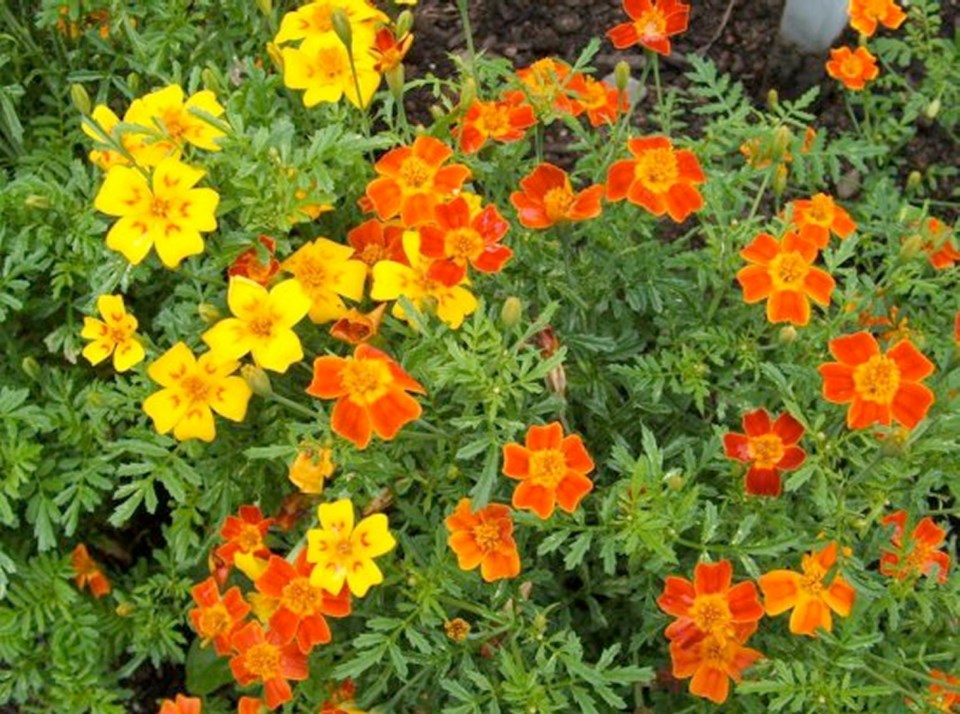Ongoing email conversations with readers constitute a significant perk of writing this column.
Your comments and inquiries often launch me into a step-by-step mystery to be solved, puzzle-like, piece by piece.
When Bill wrote to describe how tiny wasps in his greenhouse seemed to be keeping his tomatoes free of whitefly, I replied that the wee creatures were probably parasitic wasps that prey on whitefly by laying eggs in the immature forms of the pest.
The eggs hatch into larvae that feed within the developing whiteflies as the larvae evolve into adult wasps.
I wondered what would have drawn the wee wasps into the greenhouse in the first place. One source I found indicated that the honeydew excreted by whiteflies has a scent that attracts the wasp.
That led to the question: Wouldn’t there have to be a fair amount of honeydew, from an advanced whitefly infestation, to attract the wasps inside a greenhouse?
Perhaps flowers that attract and feed the wasps were blooming near the greenhouse. I sent Bill a list of flowers, including alyssum, cilantro, thyme, rosemary and more, that attract parasitic wasps.
The final piece of the puzzle fell into place with Bill’s last email, sent to thank me for my reply, including the additional information about flowers that feed parasitic wasps.
Then he added: “I had marigolds planted in each tomato pot. That may have been what attracted these little pals of the greenhouse. I do hope they are back again.”
Curious, I dove into a few references to find out whether there was any clear connection between marigolds and whitefly.
I found my answer in The Companion Garden by Bob Flowerdew.
Under “Marigold” I found this: “These tender annuals are very beneficial, and well known for keeping whitefly out of greenhouses.”
They will not drive them out once in, though!
As early as possible each year, plant French marigold (Tagetes patula) near all vegetables, fruit bushes and paths as a pest deterrent. French marigolds are mainly short, bushy plants.
Many varieties are commonly available.
For the purposes of feeding beneficial insects, single flowers in general are preferred over double blooms.
In single flowers, pollen and nectar are both more easily accessible to the insects.
Pollen feeds them and nectar supplies the energy needed for the beneficials to lay plenty of eggs and increase their populations.
Among French marigolds the Disco Series is single-flowered. My personal favourite is Naughty Marietta, the oldest single-flowered French marigold still available.
It used to be listed by several sources, but now I can find it in only one — Florabunda Seeds, an Ontario source of heritage flowers and vegetables.
Very useful also are the ferny-leaved, small-flowered signet marigolds (T. tenuifolia).
They bloom into autumn, and the citrus-flavoured petals are edible.
Garden Events
Rose meeting. The Mid Island Rose Society will meet on Monday, March 16, from 6 to 8 p.m. in the North Nanaimo Library on Hammond Bay Rd. Information at 250-390-2805.
Eaglecrest meeting. The Eaglecrest Garden Club will meet on Wednesday, March 18, at 7 p.m. in the Qualicum Beach Civic Centre, 747 Jones St. Doors open at 6:30. Capri Brugge will present Water Use in the Changing Climate. Learn about conserving water indoors and in the garden, and about government rebates for rainwater collection.
Delving into plants. The Horticulture Centre of the Pacific, 505 Quayle Rd. in Saanich, is hosting the next class in the Plant Identification and Culture series on Saturday, March 21, from 1 to 4 p.m. This is an ongoing series of monthly classes that can be joined at any time. In each session Diane Pierce introduces 25 new plants with descriptions, preferred growing conditions, landscape uses and maintenance. Cost to HCP members per session is $35, others $45. Cost for 12 sessions: members $350, others $450. To register call 250-479-6162. Details at hcp.ca
AGGV lecture series. The third illustrated lecture in the current Art Gallery of Greater Victoria series of four lectures will feature Betsy Tumasonis presenting Niki de Saint Phalle's Giardino dei Tarocchi: A French Artist and her Italian Sculpture Garden. The garden (giardino), in Tuscany, is filled with figures based on Tarot card images. The lecture will be given on Sunday, March 22, from 2 to 4 p.m. at the gallery. Ticket cost per lecture is $30 for members, others $35. Tickets are available online at aggv.ca, under Events, or at AGGV, 1040 Moss St.t



